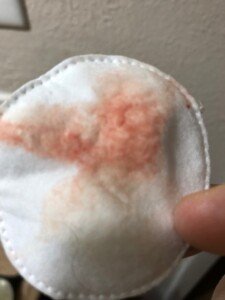In many cases of a uterine biopsy, bleeding occurs afterwards. Is there a way to tell if this is from cancer or from the procedure itself?
A uterine biopsy requires that an instrument be inserted through the cervix (after passing through the vagina) and into the uterus, and then suctioning up tissue to be sent to a lab for microscopic analysis.
At some point along the way, bleeding can be invoked by the procedure itself – particularly in women who have not been sexually active for a long time or who have low levels of estrogen due to postmenopausal status.
However, is it possible for a malignant mass in the uterus to become aggravated by the biopsy procedure – and therefore bleed enough for the blood to pass through the vagina?
Bleeding After a Uterine Biopsy
“It depends on why you were having a biopsy in the first place,” says Dr. Kate Killoran, OBGYN and medical advisor at Your Doctors Online, an online doctor chat site.
“Evaluating for uterine cancer is a common indication for a uterine biopsy.
“Bleeding after the biopsy could be due to cancer which was the reason for the biopsy in the first place.”
The blood can make its way to tissue paper when a woman wipes herself after urinating, or leave a stain on her panties.
“Uterine cancer often bleeds easily — so doing the biopsy may stir up more bleeding,” says Dr. Killoran.
“Having bleeding after a biopsy, unless the reason for doing the biopsy was to rule out cancer, would not increase the possibility of cancer.
“Often, biopsies are done to evaluate irregular bleeding which could increase the likelihood of bleeding after a biopsy, but not make having cancer any more likely.”
If this seems a bit confusing, keep reading.
Bleeding from the Procedure Is not Unusual

“It may mean nothing at all,” says Dr. Killoran. “Sometimes biopsies bleed more than others.
“It may mean you are bleeding more easily and it takes a little longer for the biopsy site to heal.”
Benign bleeding from the procedural trauma may occur up to two weeks afterwards – but it should be scant rather than heavy or even moderate.
• The first incidence of procedural bleeding from the uterine biopsy may even occur three or four days after, rather than on that same day or the day after.
• In short, it can be intermittent.
Look at the Bigger Picture
The patient needs to put things into perspective as well as not hesitate to ask her doctor questions.
For example, if a woman has had back-to-back negative uterine biopsies 20 months apart, AND a recent transvaginal ultrasound looks normal and reveals a thin endometrium – then any bleeding she has following the biopsy can confidently be attributed to the procedure itself, especially if the bleeding does not recur beyond two weeks after the procedure.
Your OBGYN will tell you that a little bleeding is normal following an endometrial biopsy, particularly if you’re postmenopausal, since postmenopausal tissue is more friable (easily crumbled) due to atrophy caused by depleted estrogen levels.
The bleeding may be accompanied by cramping – which, too, is normal.
However, frequent or heavy bleeding needs to be brought to your doctor’s attention.
Abnormal vaginal bleeding or discharge, especially after menopause, needs an immediate and thorough investigation.
• Uterine biopsy
• Transvaginal ultrasound OR hysteroscopy, depending on your medical history, cancer risk factors and discussions with your physician.
• Test for vaginal infection.
• Urinary tract exam, since this can be the source of “vaginal” bleeding.
You should also undergo a digital pelvic exam, rectal-vaginal exam and be caught up on your Pap smears.
 Dr. Killoran has a private practice and is also a health coach at drkatemd.com. Your Doctors Online offers a free 7 day trial: Ask a doctor questions and get answers in minutes from anywhere 24/7. Learn more here.
Dr. Killoran has a private practice and is also a health coach at drkatemd.com. Your Doctors Online offers a free 7 day trial: Ask a doctor questions and get answers in minutes from anywhere 24/7. Learn more here.
 Lorra Garrick has been covering medical, fitness and cybersecurity topics for many years, having written thousands of articles for print magazines and websites, including as a ghostwriter. She’s also a former ACE-certified personal trainer.
Lorra Garrick has been covering medical, fitness and cybersecurity topics for many years, having written thousands of articles for print magazines and websites, including as a ghostwriter. She’s also a former ACE-certified personal trainer.
.














